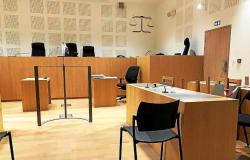“We are following through on what we promised during the municipal campaign. Everything went very well with the community, particularly with the Automobile Club de France and the angry bikers,” explains Didier Jeanjean.
The deputy mayor of Bordeaux, responsible for nature in the city and peaceful neighborhoods, explained during the inauguration of the installations the reasons “which motivate this policy”:
“It is first and foremost a question of public health: reducing air pollution, noise pollution… Then there is road safety, particularly for pedestrians and cyclists. Finally, there is attractiveness, because pedestrian areas become places to live, conducive to strolling and shopping in city centre stores.”
The pedestrianization of Bordeaux city center has just reached a new milestone, with two new perimeters since Monday, July 1 at noon: the axis of the streets Elisée-Reclus – Bonnie – Burguet, and that of the streets Ravez – Buhan – Rousselle. As of September 2, two new perimeters will come into operation: Mably and streets Bouffard – Montbazon – Nancel-Penard.
Confusion
In front of the Aquitaine Museum, Cours Pasteur and Rue Duffour-Dubergier now form a one-way road for motorists, with a dedicated cycle path leading out onto Cours Victor-Hugo.
However, the new traffic plan is struggling to be understood by users. At Place Pey Berland, motorists continue to enter Rue Duffour-Dubergier using the cycle path, despite the signs installed.
Thomas, a resident of Cambes, drives to work in the Bordeaux metropolitan area every day. He deplores a policy that is almost exclusively aimed at residents of the city centre:
“A lot of us come from outside to work in Bordeaux and bring the city to life. But when you live in Entre-deux-Mers, there is no adequate transport. I am also a cyclist, I cycle when I can, but not when it is not safe at all.”
Mixed opinions
At the Hôtel de Ville tram stop, Philippe, who lives in La Victoire, is rather harsh about the new system put in place by the municipality:
“It was a motorist who warned me about this change. The town hall makes decisions without informing us. Now I go through small streets to get home, I don’t find that logical when we have major arteries that can be used in both directions. It adds time to the journey and it’s dangerous.”
A little further towards the Aquitaine Museum, the opinion of the cyclists seems on the contrary to be satisfied with this new development. Mathilde, who comes to pick up her children from school in the neighborhood, considers the initiative “rather good” while wondering about “what it will do for cars”. A little further, Alberto has also just picked up his son from school:
“I’m a cyclist, I was a little surprised by this change. Every day I pass by here on my way back to Pessac, it’s true that this intersection at Cours Victor-Hugo is complicated between the tramway, the bikes, the cars… […] I also say: cyclists should not do whatever they want, many of them go through red lights.”
Less pollution
Following the creation of the Chartrons sector in 2022 (25 ha), the city of Bordeaux is thus extending its pedestrian sector in the city center by an additional 12 ha.
Since 2020, the pedestrian areas of the city of Bordeaux have increased from 172 ha to 245 ha and from 27 km to 40 km of roads (approximately +50%). Thanks to this policy, the City of Bordeaux states in a press release that “Bordeaux thus benefits from one of the largest pedestrian areas in France”:
“Pollution has fallen by 28% since 2020 across Bordeaux and road traffic has fallen by 11% within the boulevard and by 19% on the boulevards,” the press release continues.






